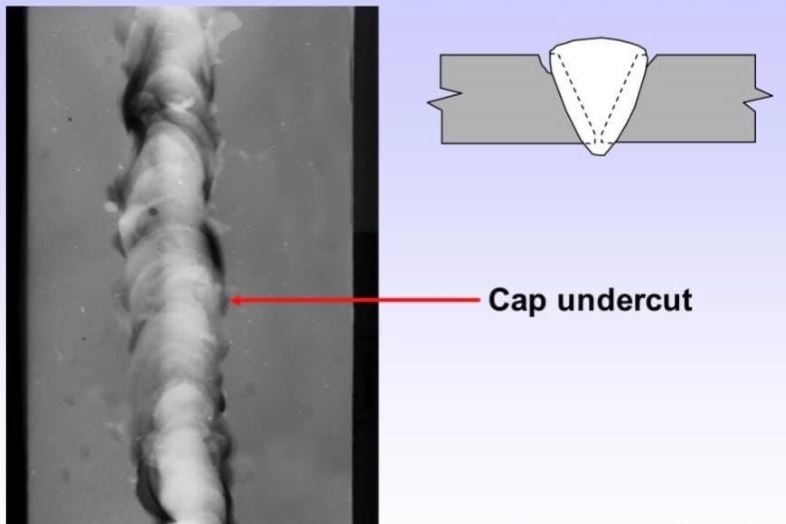Expert Techniques for Preventing Weld Undercut Efficiently
Expert Techniques for Preventing Weld Undercut Efficiently
Blog Article
Understanding the Art of Welding: Exactly How to Prevent Undercut Welding Issues for Flawless Construction Results
Performance and precision are paramount in the globe of welding, where also the least flaw can jeopardize the architectural honesty of a made item. One usual challenge that welders face is damaging, a flaw that can deteriorate a weld joint and lead to pricey rework. By understanding the origin creates of undercut welding and implementing effective strategies to stop it, welders can raise their craft to new degrees of quality (Preventing weld undercut). In the quest of flawless construction results, grasping the art of welding to avoid undercut problems is not just an ability but a need for those aiming for perfection in their job.
Understanding Undercut Welding

To stop undercut welding, welders should make certain appropriate welding specifications, such as changing the present, voltage, traveling rate, and maintaining the right electrode angle. Additionally, using the proper welding technique for the certain joint configuration is crucial. Using weaving activities or backstepping techniques can help guarantee correct weld steel deposition and lower the chance of undercut development. Routine evaluation of welds during and after the welding process is also critical to catch any kind of undercut early and make required adjustments to stop more issues. Preventing weld undercut. By recognizing the root causes of undercut welding and implementing preventative procedures, welders can attain high-quality, structurally audio welds.
Root Causes Of Undercut in Welding
Understanding the factors that contribute to damage in welding is crucial for welders to create high-quality, structurally sound welds. Poor welding existing or incorrect welding speed can likewise contribute to damage. Understanding these reasons and carrying out correct welding techniques can aid protect against damaging problems, making sure resilient and solid welds.
Methods to avoid Undercutting

To minimize the danger of undercutting in welding, welders can employ calculated welding techniques targeted at boosting the top quality and stability of the weld joints. One efficient method is to readjust the welding parameters, such as voltage, current, and travel rate, to make sure appropriate warm input and deposition. Keeping an appropriate electrode angle and guaranteeing constant travel speed can additionally help avoid undercut. Additionally, using the proper welding technique for the particular joint arrangement, such as weave or stringer grains, can add to lowering undercutting. Preventing weld undercut.
Moreover, proper joint preparation, consisting of making certain tidy base products complimentary of pollutants and utilizing the proper welding consumables, is essential in stopping undercut issues. Using back-step welding strategies and controlling the weld grain account can additionally aid distribute heat evenly and decrease the threat of undercut. Regular examination of the weld joint throughout and after welding, as well as executing quality control measures, can help in finding and dealing with damaging concerns quickly. By applying these strategies faithfully, welders can attain remarkable manufacture results with minimal undercut problems.
Relevance of Appropriate Welding Parameters
Choosing and maintaining proper welding parameters is crucial for attaining successful welds with minimal problems. Welding parameters refer to variables such as voltage, existing, take a trip speed, electrode angle, and protecting gas flow rate that directly affect the welding procedure. These specifications must be meticulously adjusted based upon the kind of material being welded, its thickness, and the welding technique employed.
Correct welding specifications ensure the best amount of warm is put on thaw the base steels and filler material uniformly. If the specifications are set too expensive, it can lead to extreme warmth input, creating distortion, spatter, or burn-through. On the other hand, if the criteria are also low, insufficient fusion, absence of penetration, or damaging might take place.
High Quality Guarantee in Welding Procedures

Conclusion
In final thought, grasping the art of welding needs a detailed understanding of undercut welding, its reasons, and strategies to avoid it. By ensuring correct welding parameters and executing quality control methods, remarkable construction outcomes can be attained. It is important for welders to continually pursue excellence in their welding procedures to avoid undercut issues and produce top notch welds.
Undercut welding, a common defect in welding processes, takes place when the weld metal doesn't effectively fill the groove and leaves a groove or depression along the bonded joint.To stop undercut welding, welders need to make sure proper welding parameters, such as readjusting the existing, voltage, travel speed, and keeping the proper electrode angle. Insufficient welding incorrect or existing welding rate can also contribute to undercut.To reduce the risk of undercutting in welding, welders can employ strategic welding strategies intended at improving the top quality and stability of the weld joints.In conclusion, mastering the art YOURURL.com of welding requires a comprehensive understanding of undercut welding, its causes, and methods to stop it.
Report this page